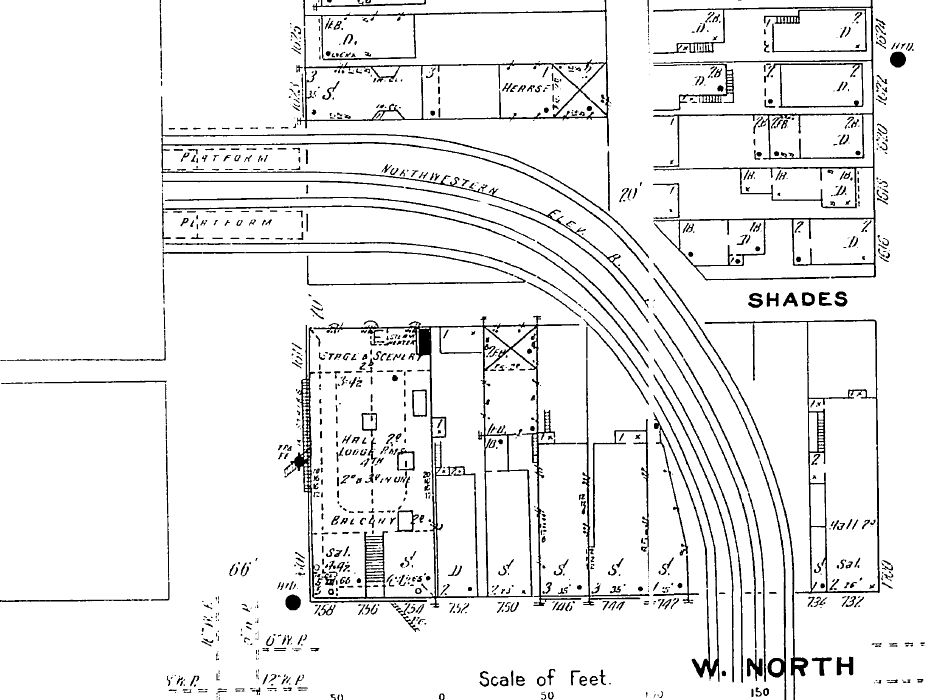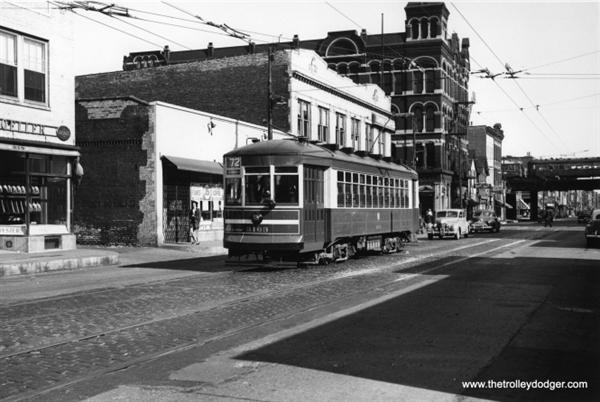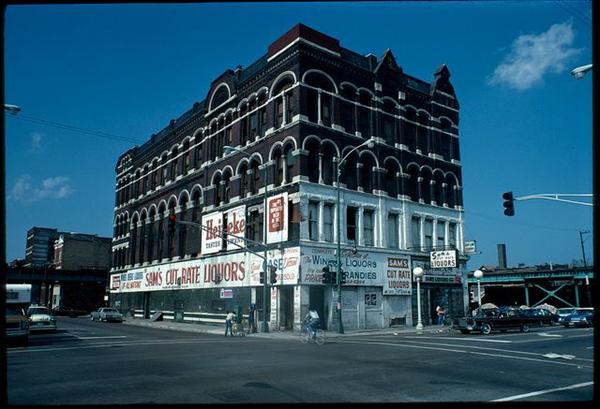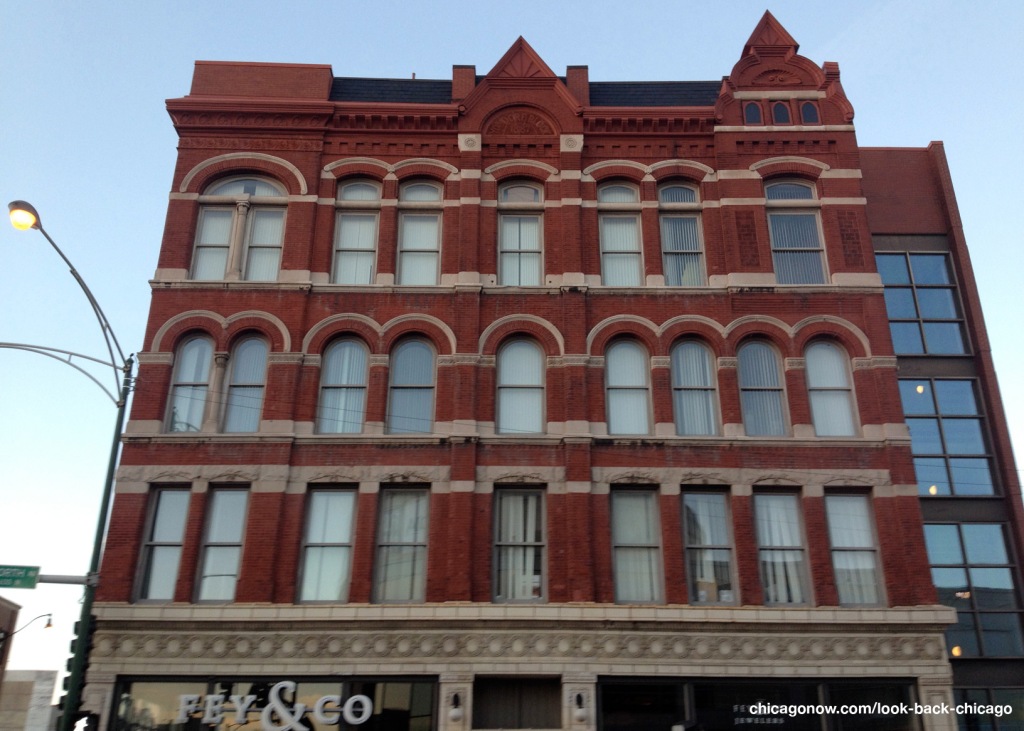Brown Line riders: you pass this building every day. In fact, you probably passed it this morning. In the middle of that long stretch between Armitage and Sedgwick, the tracks wind around a giant building at the intersection of North and Halsted. The building is one of the last behemoths still standing from Chicago’s post-fire, pre-World’s Fair boom: Yondorf’s Hall.
Located at 758 W. North Avenue, it was built in 1887 by clothing merchants August and Charles Yondorf in the Gothic-Victorian style in what was, at the time, a neighborhood with a high concentration of German immigrants. It was designed by Frederick Ahlschlager, who also designed other public halls (including Baer’s Hall that same year). On the second and third floor, a theater was built where local social events and civic group meetings were held.
North Avenue was a busy shopping and cultural district in the late 1800s. With this in mind, the first floor was intended as use for a retail space, but never actually housed Yondorf’s clothing business, which already had a store a few blocks east at North and Larrabee. The first tenants of the building were Gloeckner’s Saloon and Freeman’s Grocery.

In 1899, the Northwestern Elevated Railroad (now known as the CTA Brown Line) built their tracks around the north and east sides of the building. Despite what it may seem, the curve in the elevated tracks was not built to avoid the building, but to follow the various alleys, which was cheaper and easier than buying buildings and destroying them. A station on the elevated tracks opened outside the building on Halsted the following year.
In 1919, the building was bought by the Prudential Savings State Bank, who renamed it during their tenure to Prudential Hall. They occupied the building for nearly ten years and planned to tear it down and replace it with a new structure until the Great Depression hit, closing the bank. The building remained a local meeting place for at least another decade. However, during World War II and the following years, it began to show its age. The elevated station just outside the building closed in 1949.

In 1958, Sam Rosen bought the building and opened up Sam’s Cut-Rate Liquors, a large “warehouse of wine” that became known across the city and attracted all manners of people at all hours of the day. The area surrounding the building was becoming derelict and, by 1960s and 1970s, was considered by many to be downright unsafe. Sam’s, however, continued to thrive.
In 1980, Paul Weingarten, reviewing the store for the Chicago Tribune, called it “seedier than most” liquor stores at first glance. but after venturing down to their legendary “dank” Wine Cellar in the basement that once housed a bank vault, exclaimed it “better than a weekend campout,” declaring “Sam’s is not merely for wine, but for adventure.”

At this point, however, the building – and the surrounding neighborhoods – were seen as eyesores. Mayor Jane Byrne intended to change the neighborhood and steps began to overhaul the area. Intending to tear down the dilapidated building, she facilitated the store’s move to a rehabbed brewery in 1984 in a move some criticized, including future mayor Richard J. Daley (then State’s Attorney). However, the building stayed, although it remained vacant for years.
In 1988, author David K. Fremon in his book Chicago Politics, Ward by Ward, declared the neighborhood gentrified. “Seedy only ten years ago,” he states, “Young (mainly white) professionals have largely replaced working-class blacks in the southwest corner of the ward–one of the city’s few examples of whites “chasing” blacks out of a neighborhood.”
The building was soon saved by Affiliated Banc Group, which sought to open a branch in the building in 1990. The building was renovated with Robert G. Lyon Associates Inc. and Vinci Hamp Architects and many elements that were left in disrepair – including the theater on second floor – were restored at this time. In 1998, Steppenwolf Theater bought the Hall, which it had been using as a rehearsal space and continues its use to this day.

On July 25, 2001, the building was finally designated a Chicago Landmark. Today, it stands tall over its modern counterparts at North and Halsted, including CB2, Apple Store and Eddie Bauer, as a symbol of the neighborhood’s origins.